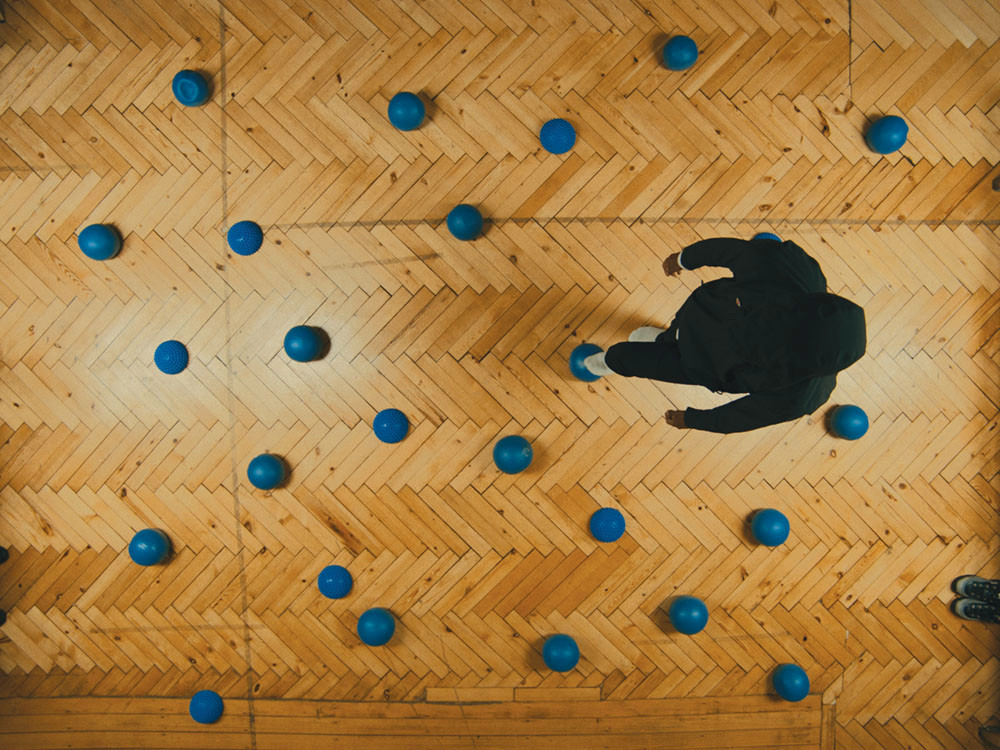[ad_1]
A shower stool, a poem printed on A4 paper, a sheet of aluminum foil painted with lightening cream, a cake of blue soap, and cosmetic sponges daubed in “truly topaz” makeup comprised Imran Perretta’s Untitled (Twice as Nice), 2015. Resembling lost property, these collected items signaled the artist’s intention to reject dominant narratives equating cleanliness with whiteness.

Courtesy Chisenhale Gallery, London; Spike Island, Bristol; the Whitworth, University of Manchester; and the BALTIC Centre for Contemporary Art, Gateshead.
While still searching for methods and aesthetics with which to undo embedded racism, the artist has more recently transitioned from sculpture to moving image, and this year was shortlisted for the 2019 Film London Jarman Award. Born in South London to Bangladeshi and Italian parents, Perretta started out as a self-taught filmmaker and DJ, influenced by watching music videos on Channel U, an underground alternative to MTV that nourished early UK grime. The artist’s formal training, which began at University College London’s Bartlett School of Architecture and was interrupted by his mother’s illness, culminated in 2014 in an MFA degree from the Slade School of Fine Art, where he now teaches undergraduate sculpture.
Committed to collaboration, Perretta, with curator and writer Taylor Le Melle, founded not/nowhere in 2018. The artist workers’ cooperative aims to remove financial barriers to learning to use new media equipment and to foster sustainable work by “Black and POC artists exploring new possibilities for owning the means of production.” With his studio mate Paul Purgas, Perretta is also one half of AMRA (Bengali for “we are,” implying a sense of togetherness), a music duo whose projects sample sounds from South Asian archives. The pair aim to salvage cultural remnants from what they describe as the “trauma of partition” imposed by Britain in 1947, and to counter cultural colonialism in the UK’s current hostile environment.

Courtesy Chisenhale Gallery, London; Spike Island, Bristol; the Whitworth, University of Manchester; and the BALTIC Centre for Contemporary Art, Gateshead.
The destructors (2019), Perretta’s two-channel film debuting in his first institutional solo exhibition, at Spike Island in Bristol, takes its title from the short story by Graham Greene that was taught to the artist in school as part of the national English literature curriculum. Its description of a destructive gang of boys seemed to work in lockstep with suspicion directed at groups of Muslim pupils through official measures like the controversial Prevent strategy, which operates in schools and elsewhere to dissuade youth from various forms of extremism and, ultimately, terrorism. This new work derives its uneasy atmosphere from an increasingly fast and loud clapping of hands on knees, and from lighting that emphasizes the green pallor of a classroom’s interior. An actor describes how “all this apparatus would dangle from the walls of the house, like limbs,” alluding to the inadequate installation of handrails and medical support furniture for Perretta’s mother in the family home. The script of the destructors is built from a twenty-seven-page poem that Perretta wrote for a small cast of South Asian Muslim actors from London, after working with a group of Bangladeshi young people in workshops facilitated by a social justice organization. The process yielded Perretta’s account of how during his adolescence, post-9/11, his body was cast as an object of state-sponsored hate. In the final scene, an actor falls back in a performance of one of the film’s several awkward trust exercises. The piece ends before we learn whether he was caught.
This article appears under the title “First Look: Imran Perretta” in the November 2019 issue, p. 22.
[ad_2]
Source link

